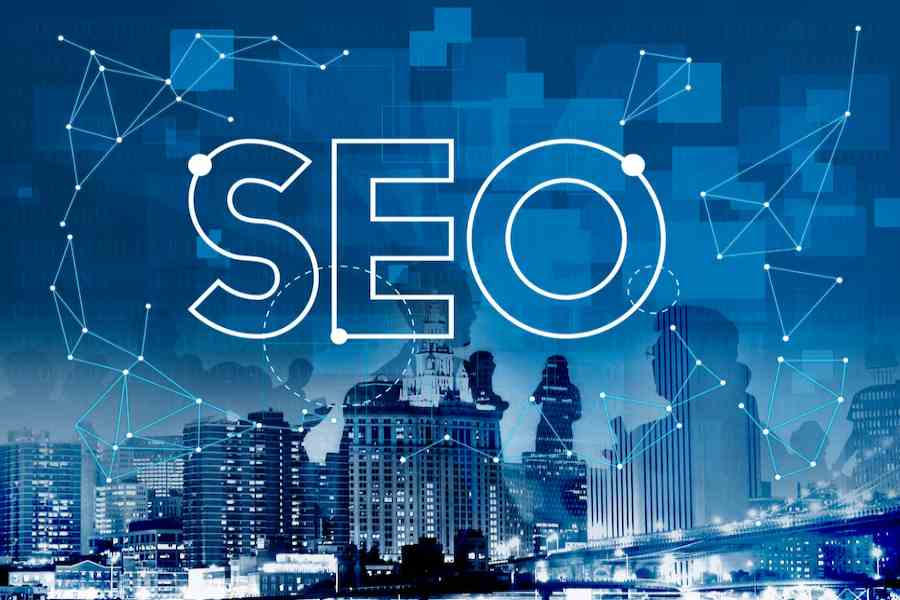How SEO and SEM Work Together: Boost Traffic, Rankings, and ROI

In the ever-evolving world of digital marketing, understanding how SEO and SEM work together can give your brand a major competitive advantage. While some marketers treat Search Engine Optimization (SEO) and Search Engine Marketing (SEM) as separate strategies, combining them creates a powerhouse of online visibility, traffic, and conversion potential.
SEO focuses on improving organic rankings by optimizing website content, structure, and backlinks. SEM, on the other hand, uses paid strategies such as Google Ads to appear in sponsored search results. Though these two disciplines have different techniques, when strategically aligned, they can amplify each other’s effectiveness.
By using SEO to build long-term authority and trust and SEM to gain instant visibility and test keyword strategies, businesses can maximize their return on investment. Together, SEO and SEM can fill gaps in performance, adapt to algorithm updates, and meet both short-term and long-term goals.
This article will break down how SEO and SEM work together, outline actionable ways to integrate them, and explain why synergy between the two is crucial for dominating search engine results. Whether you’re a startup with a limited budget or a large enterprise with dedicated marketing teams, this guide will show you how to leverage both channels in harmony.
How SEO and SEM work together?
SEO builds organic visibility, while SEM provides immediate traffic through paid ads. When used in tandem, they support each other—SEO for long-term growth, SEM for instant reach—helping maximize brand visibility, clicks, and conversions.
Why It’s Important to Understand How SEO and SEM Work Together
In the modern digital marketplace, success isn’t just about offering a great product or service—it’s about being seen. That’s why understanding how SEO and SEM work together is essential for any brand aiming to grow its online presence. SEO (Search Engine Optimization) focuses on building long-term visibility through organic search. It enhances your site’s authority and relevance, helping you climb search engine rankings and earn trust from users. However, it’s a long-term strategy that can take months to deliver measurable results, especially in competitive markets.
SEM (Search Engine Marketing), on the other hand, offers immediate visibility through paid search ads. It’s highly effective for new product launches, time-sensitive promotions, and testing keyword performance. The drawback is that it requires continuous spending to maintain exposure.
When combined, SEO and SEM complement each other perfectly. SEM campaigns provide valuable insights into high-performing keywords, which can be integrated into SEO efforts for better long-term gains. Meanwhile, SEO reduces reliance on paid ads for expensive keywords by capturing organic traffic.
This synergy boosts brand visibility across both paid and organic channels, reaching users at multiple touchpoints and reinforcing credibility. Ultimately, integrating SEO and SEM ensures stronger search engine dominance, better ROI, and more consistent traffic.
How SEO and SEM Differ but Complement Each Other
Key Differences in Strategy
SEO and SEM may serve similar purposes—enhancing visibility and driving traffic—but their core strategies are quite different. SEO focuses on optimizing a website’s content, structure, and backlinks to increase organic search rankings over time. It’s a content-driven, technical process that emphasizes building long-term trust with search engines. SEM, on the other hand, revolves around paid advertising strategies, such as Google Ads or Bing Ads, that place your website at the top of search results instantly. While SEO earns its way up the rankings, SEM buys its spot.
Speed of Results
Another major difference lies in the speed at which results are achieved. SEO is a slow and steady process that builds momentum over months. It takes time to see significant increases in rankings and organic traffic, especially in competitive industries. SEM delivers near-instant results. Once a campaign is launched, ads start appearing, and traffic can begin flowing immediately, making it ideal for short-term goals like product launches or limited-time offers.
Cost Structure
The investment models for SEO and SEM also vary. SEO typically requires time, skilled labor, and consistent content creation but offers long-lasting value and returns. SEM requires continuous financial input, as traffic and visibility cease the moment you stop paying for ads. However, SEM can be tightly controlled and scaled based on budget.
Measurement and Metrics
SEO metrics usually revolve around organic rankings, traffic sources, bounce rates, and user engagement. In contrast, SEM metrics include click-through rates (CTR), cost per click (CPC), and conversion rates, offering real-time performance data.
Integration Points
Despite their differences, SEO and SEM can work together strategically. Insights gained from SEM campaigns, such as high-converting keywords or user behavior, can directly enhance SEO strategies. Likewise, SEO success can reduce the cost burden of SEM by capturing organic traffic, creating a balanced, data-driven marketing approach.
Benefits of Combining SEO and SEM
Combining SEO and SEM creates a more comprehensive and powerful digital marketing strategy. While each channel offers individual benefits, their true strength lies in how they work together to amplify reach, engagement, and conversions. Here are the key advantages of integrating both:
- Greater Visibility: By appearing in both organic and paid search results, your brand occupies more real estate on the search engine results page (SERP). This dual presence boosts visibility and increases the chances that users will click through to your site.
- Shared Keyword Insights: SEM provides valuable keyword performance data that can guide your SEO strategy. You can identify which keywords convert best through paid campaigns and focus your organic efforts around those terms for better long-term ROI.
- Enhanced Click-Through Rates (CTR): When users see your brand in both paid ads and organic listings, it reinforces credibility and trust. This repetition increases click-through rates across both channels, giving your site more opportunities to attract traffic.
- A/B Testing Capabilities: SEM offers quick insights through A/B testing of headlines, descriptions, and landing pages. The lessons learned from these paid experiments can inform content and design choices in your SEO strategy.
- Stronger Brand Recognition: Consistent exposure through multiple placements helps reinforce your brand in the minds of consumers, whether they’re ready to buy now or later.
- Better Audience Targeting: SEO casts a wide net by reaching users searching organically, while SEM’s precision targeting lets you focus on specific demographics or behaviors—offering a full-funnel approach to capture leads at every stage.
Challenges and Solutions in Integrating SEO and SEM
Integrating SEO and SEM isn’t without challenges. One common issue is departmental silos. Often, separate teams handle SEO and SEM, which leads to misaligned goals and missed opportunities. Overcoming this starts with fostering collaboration and unified reporting.
Another hurdle is inconsistent messaging. If your organic and paid content doesn’t align, it can confuse users or dilute your brand voice. Ensure that both channels use consistent tone, visuals, and value propositions.
Budget allocation is another consideration. Investing too heavily in one channel can limit the other’s potential. Evaluate performance metrics regularly to adjust your budget based on what drives the best results.
Lastly, tracking results across SEO and SEM can be difficult. Use tools like Google Analytics 4 and Google Search Console to create a centralized performance dashboard. Proper attribution modeling ensures each channel gets credit for its contribution.
By proactively addressing these challenges, marketers can build a powerful, integrated strategy that maximizes impact across all stages of the buyer’s journey.
Best Practices for Aligning SEO and SEM Strategies
Achieving true synergy between SEO and SEM requires more than running campaigns side by side. It calls for thoughtful alignment in strategy, execution, and measurement. Here are six best practices to effectively integrate both channels and maximize their combined impact:
- Set Unified Goals and KPIs: Start by aligning your SEO and SEM teams around shared objectives. Whether your focus is on increasing conversions, boosting lead quality, or improving return on ad spend (ROAS), having common goals ensures both teams are working toward the same outcomes and not operating in silos.
- Share Keyword Data Across Channels: One of the biggest advantages of integration is the ability to share insights. Use your SEM keyword data to identify high-performing search terms and apply them to your SEO strategy. Likewise, SEO can uncover long-tail keywords that can help improve the targeting of paid campaigns.
- Create Complementary Content and Ads: Ensure consistency in tone, value proposition, and messaging between your organic content and paid ads. This unified approach builds trust with your audience and strengthens your brand identity across all channels.
- Monitor Search Trends Together: Collaborate using tools like Google Trends, SEMrush, or Ahrefs to uncover emerging keyword opportunities. Tracking trends together allows for quicker adaptation and smarter keyword targeting in both strategies.
- Schedule Cross-Channel Reviews: Host regular strategy sessions where SEO and SEM teams can review performance, share insights, and refine campaigns together. This helps in uncovering new opportunities and eliminating inefficiencies.
- Leverage Remarketing: Use SEM to re-engage users who first discovered your site organically through SEO. This full-funnel strategy ensures you stay visible throughout the customer journey and improve conversion rates over time.
In Summery
Blending SEO and SEM is a powerful approach that helps brands grow steadily while gaining quick wins along the way. SEO builds lasting visibility by improving organic rankings, credibility, and user trust over time. In contrast, SEM delivers rapid results through targeted paid ads, allowing businesses to test new ideas and reach specific audiences immediately. When used together, these strategies reinforce one another—paid insights can guide organic efforts, and strong SEO can lower reliance on ad spend. This unified method increases brand exposure across multiple search entry points, boosts engagement, and improves the customer journey. In a competitive digital space, mastering how SEO and SEM work together ensures your business stays relevant, visible, and conversion-focused.
FAQ’s
Q. How do SEO and SEM work together in digital marketing?
A. SEO builds long-term credibility and organic visibility, while SEM drives immediate traffic through paid ads. Together, they create a stronger brand presence and improve overall conversion potential across multiple touchpoints.
Q. Can I use SEO and SEM at the same time?
A. Absolutely. Combining both allows you to capture short-term results with SEM while steadily building sustainable organic growth through SEO, maximizing reach and performance.
Q. How does SEM support SEO strategy?
A. SEM provides valuable insights into keyword performance, user behavior, and conversion trends. These data points can inform and refine SEO efforts for more targeted and efficient organic optimization.
Q. Is SEO better than SEM?
A. Each has its strengths. SEO is more cost-effective long-term, building trust and authority, while SEM delivers faster, measurable results. Used together, they balance speed and sustainability for optimal performance.
Q. What’s the ROI of combining SEO and SEM?
A. The integration of SEO and SEM typically leads to higher ROI by improving search engine visibility, increasing qualified leads, and boosting conversions through a unified, strategic approach.
